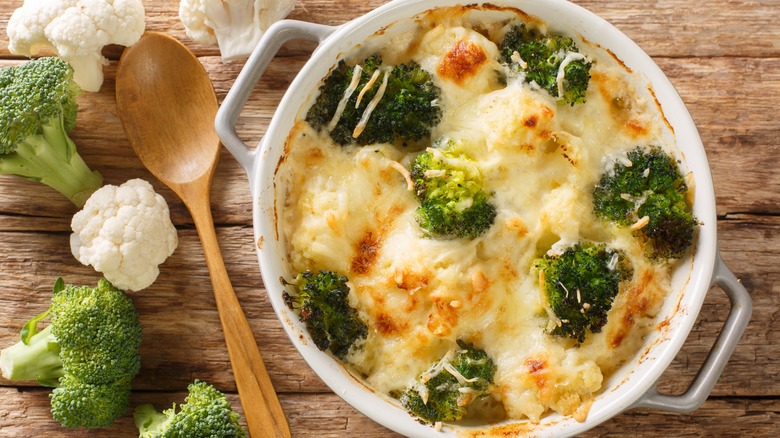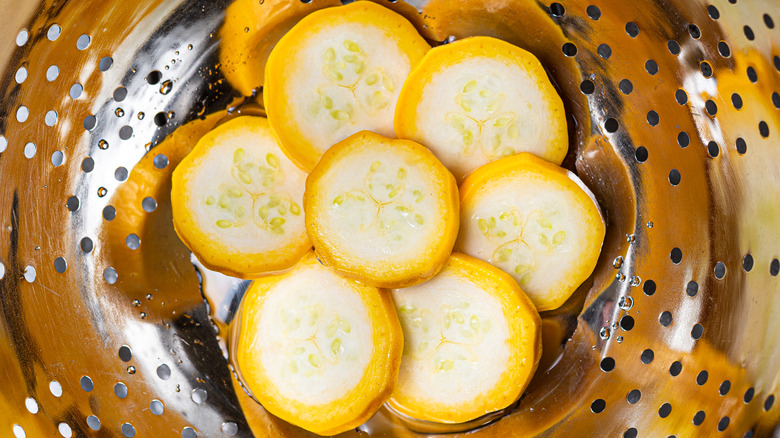The Possible Reason Your Casserole Came Out Watery
Perhaps worthy of wearing the crown for most comforting type of dish, casseroles offer that warm, cozy feeling inside your stomach that pairs well with blankets, fireplaces, and hot chocolate. These perfect weeknight meals can be prepared ahead of time, making them an ideal option for a work or school lunch, as well as a dinner you can easily reheat on busy nights.
Paired with this ease of making in advance and reheating well is the fact that casseroles fit into the category of dishes that often taste better the next day. Dr. Kantha Shelke explained to Forbes that food given the opportunity to rest often has a more balanced taste, as each individual flavor meshes together as it sits. However, as straightforward and convenient as casseroles may seem, a commonly observed flaw is that some turn out very watery. But why does that happen and what can you do to avoid this mistake?
Your vegetables could be to blame
If your casserole turned out more like a soup, the most likely cause is unsurprisingly too much liquid. But you didn't add any broth or water to the dish, so what is actually to blame? According to Allrecipes, the vegetables you selected are the most common culprit for your watery casserole, due to the high percentage of moisture that some of them contain in their raw form which seeps out as they cook down in your dish.
Vegetables make for an excellent — and some would say essential — ingredient in casseroles, but one should exercise caution when it comes to their preparation. Take green bean casserole, for example; This dish should come out savory and saucy, but often turns out soggier than you'd like. According to EatingWell, if you're using fresh green beans this could be due to the veg not being properly prepared before it was added to the dish. Other vegetables like onions, mushrooms, zucchini, eggplant, and squash also have a tendency to become watery during cooking. So, how should you go about handling these vegetables before adding them to your casserole?
How to avoid excess water in your casserole
Luckily for casserole fans, there are two simple methods you can use to prevent your dinner from turning into a pool party.
The key here is to remove some of the vegetables' moisture before inserting them into your dish. Per Allrecipes, you can par-cook fresh vegetables and drain the released liquid out before adding them to your casserole. Alternatively, the outlet recommends salting your sliced veggies and letting them rest in a colander for about 30 minutes, being sure to rinse the salt off and pat them dry afterward (you don't want to fix one soggy issue only to end up with a salty one).
The purpose of the salt is to aid in extracting excess moisture from the vegetables through the process of osmosis. Dan Souza, food science expert and chef at America's Test Kitchen, told Business Insider, "you've got all this water inside the plant cell. So by the power of osmosis, the water wants to come out and dilute that salt." But be aware, even if you wash your salted veggies off you may want to go light on the seasoning. As Souza explained, "Salt will diffuse into the plant material, so it's going to season it and it's going to taste more salty, which is usually a good thing. You're also getting rid of water so in a way you're concentrating flavor."
Follow one of these steps you'll hopefully never be disappointed by a watery casserole again.


